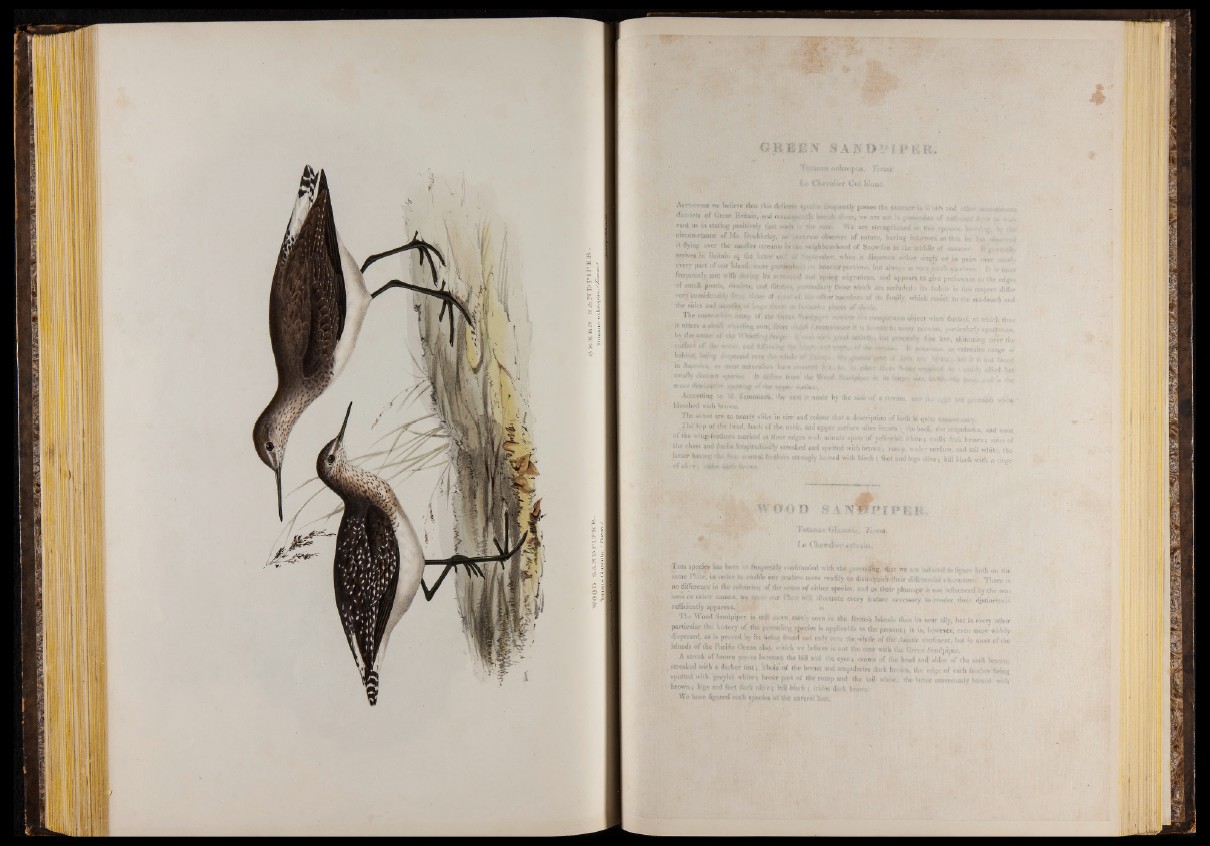
<3 H. If E' N S A 38 ?) ' S 1» E B,.
Med s
od vri
W O:-0 D S A. I P P I P I
Tote»«,«. Temm.
L e C h e va lie r ¡>ytvain.
T h is species h i* beer. u> («»founded with tbe;3iivc«ciil»g, d ia t we are ;u «W d to Sniu-e both
same Ph.se, in o rder tw enable o«r w frtcr s 'm o re readily to distir&aish their (Hdeccfittal c h a r a c te r s 1
no difference iri the vtfattrm iff the k -v -; o f either species. and as their ptainage- is not miluerieedbv i
sons o r other causes. .■ar L" illustrate eyery ieatur« necessary to ..... , ¿heir d.isti
sufficiently app a r e n t .;:^ '
The Wood Sandpiper is y r f e rat«;- •,«» in the British Islands dun Ilear ally hut in ever
particular the bWory of the p tH ^ f a g .^ e d « is appiie'rMe to the p re s e n t, it is, however, even more
dispersed, as is proved by its heiea tvmml not only V o he whole of the Isiatic citiridncne, bid n Li.ui
islands of the Pacific Oceau ubo, n Inch s r believe is out the case with the Green Sandpiper.
A streak of brown paw m h e tW i) the bill and ■ lie eyes: crown of the bead arid side? o f the neck
streaked with a darker tin t; whole of the breast and srapniaries dark brcivn, the *% e o f cich featte
spotted with greyish' while t low,* part of the romp ami the tail while, the latter nnroeroi»ly Iwrtc
brown; legs and feet dark oli.tr f bill black s ¡rides dark broke
We have figured cacb si nicies iff feitc natural^Six.?.